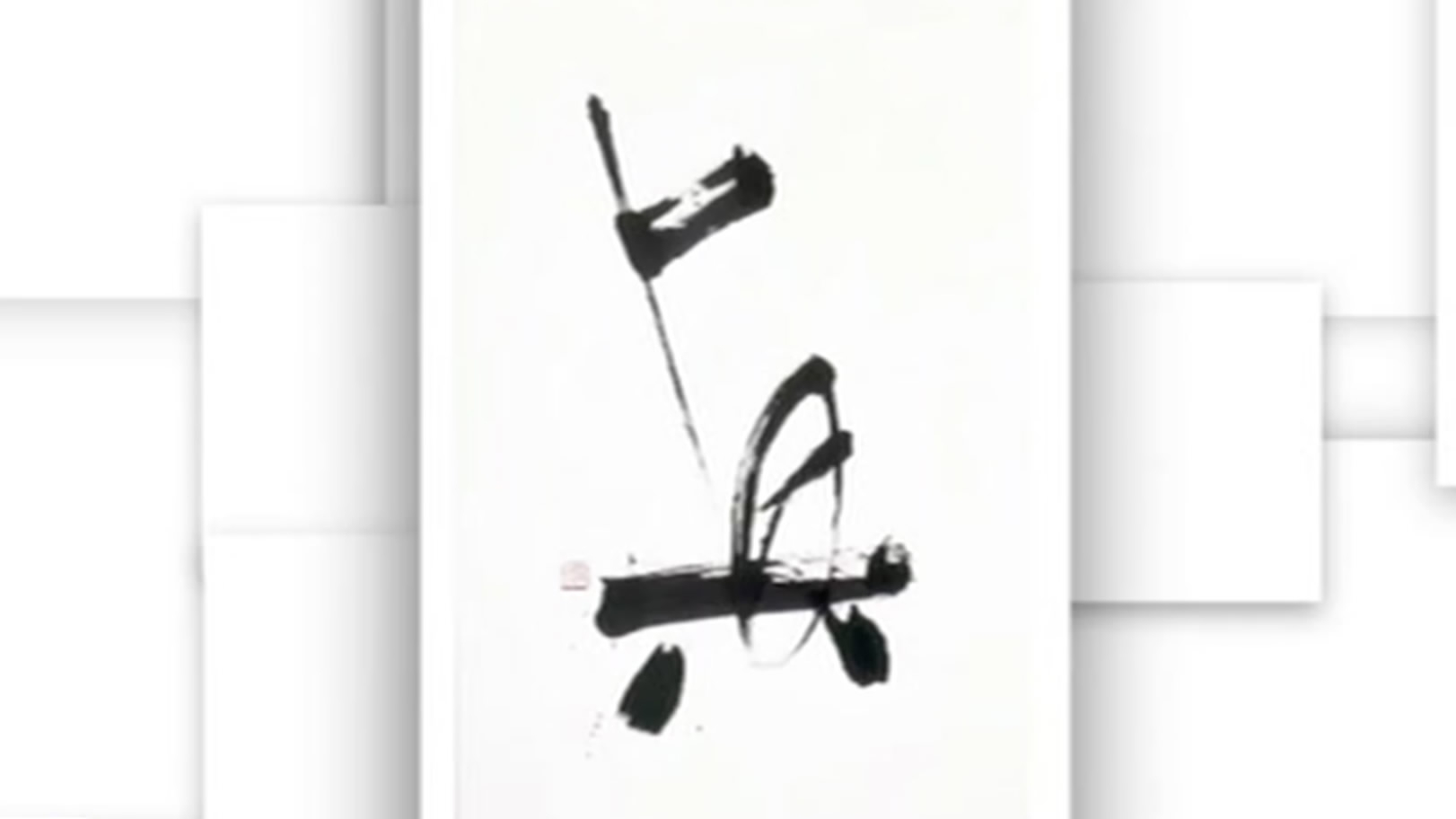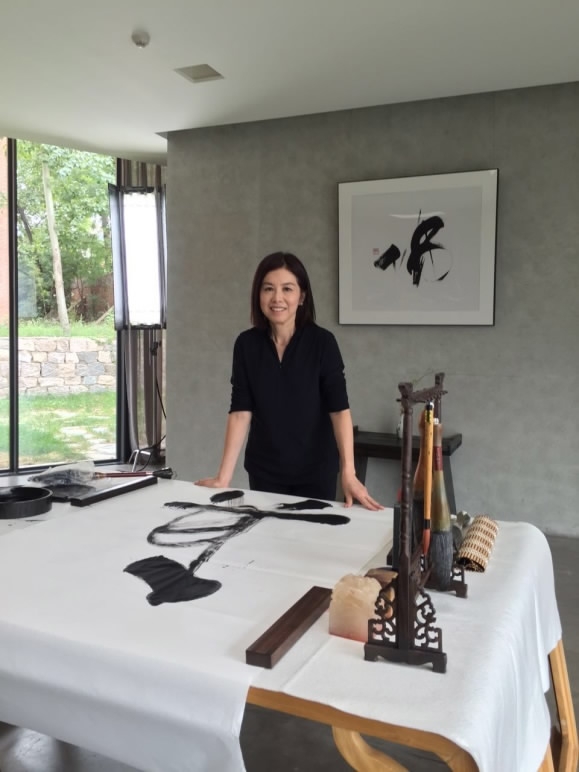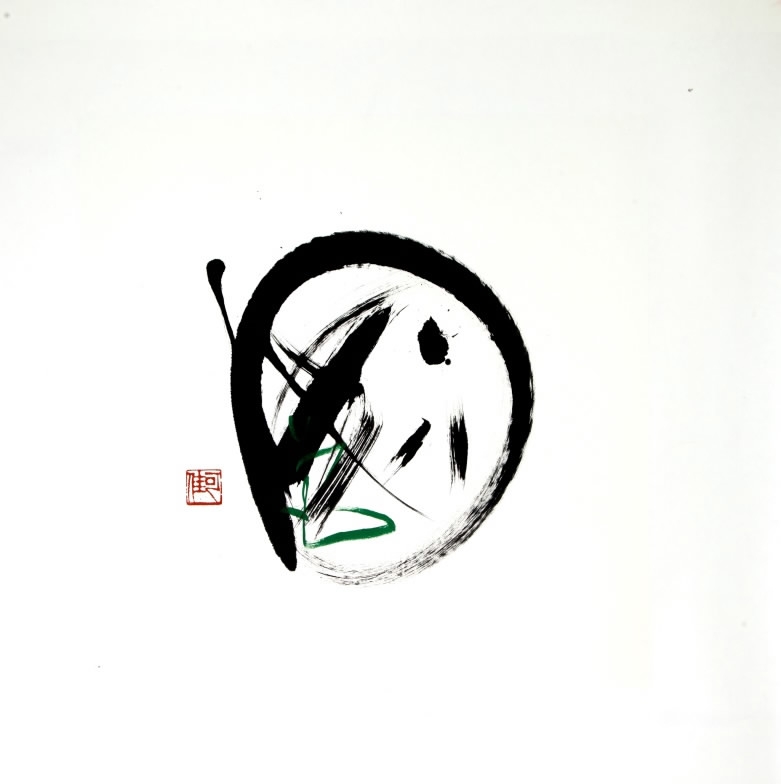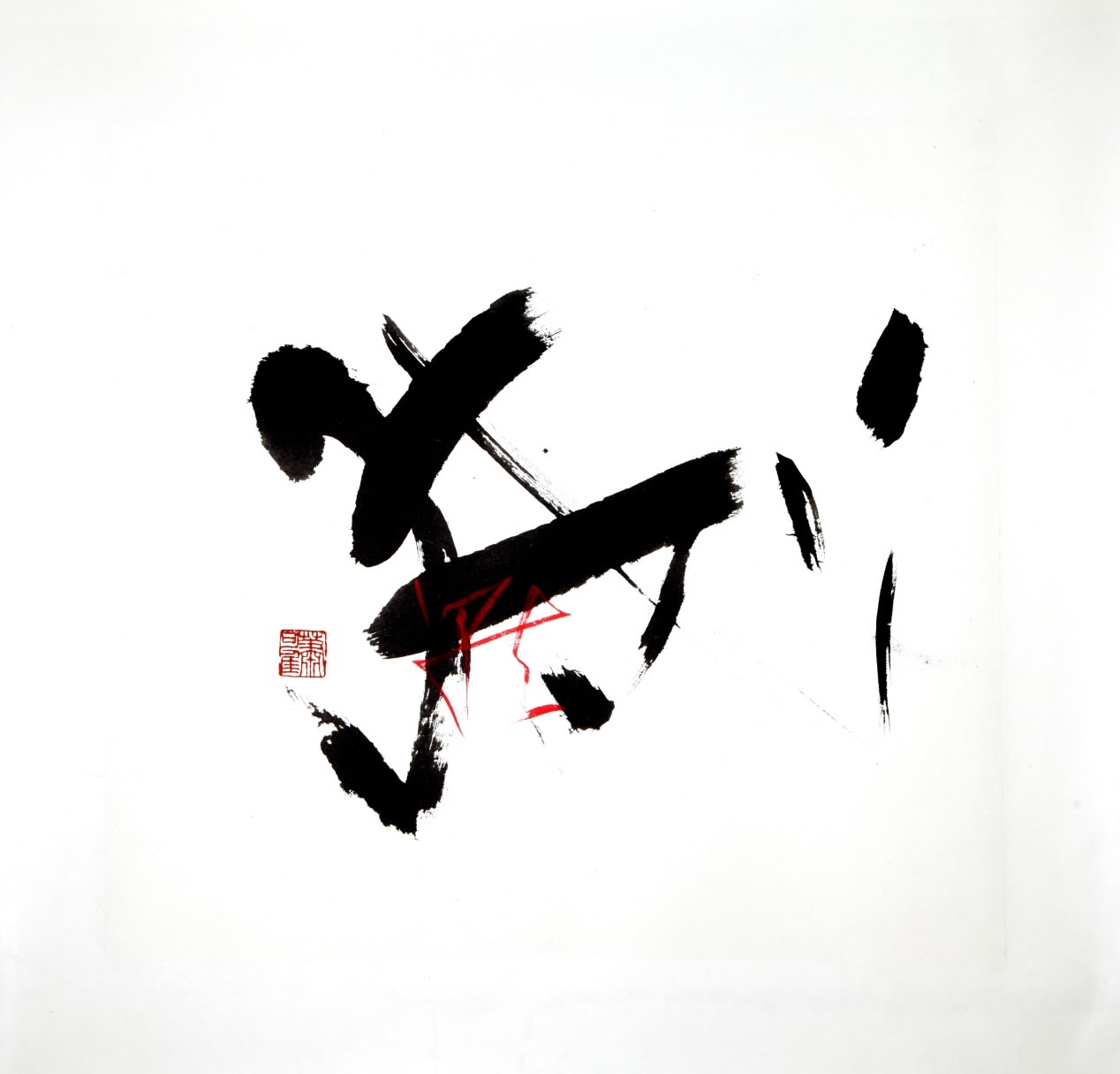
Culture
13:41, 03-Feb-2018
Brush Dance: Chinese calligraphy in a new look
By Zou Yun

Chinese calligraphy is gaining in popularity outside the country, particularly in the West. Master calligrapher Katherine Xiao Kejia is using a new technique to further promote the art form.
She uses traditional poetry and original techniques in her works. She's also a pioneer in the use of color to blend Chinese and Western styles, merging both cultures and concepts into contemporary paintings to reflect poetry and tradition in a new way.
It looks like a painting or a sketch. But it's a product of Chinese calligraphy.
And, it’s no ordinary piece, but a unique style developed by one of China’s master calligraphers, Xiao Kejia.
Xiao started learning Chinese calligraphy when she was 9, with a simple belief of her parents that “a kid should learn a skill.”
“Calligraphy is what my father and grandpa know how to do. They believed that someday, I would benefit from this skill, ” she said.

Katherine Xiao Kejia and her artwork /CGTN Photo
Katherine Xiao Kejia and her artwork /CGTN Photo
Her talent and hard work have made her one of China's most promising calligraphers. At the age of 13, her work started appearing in exhibitions throughout China and overseas.
Xiao Kejia was held up to Chinese youth as a model for her mastery in Chinese calligraphy.
Xiao said traditional training is the foundation of her skill. But her experience of studying and living overseas opened her eyes to new styles that now influence her art.
"I was able to see new art, contemporary art, Western art. I have this feeling that I want to promote traditional Chinese calligraphy. So I’d like to combine these two interests of my own, to show Chinese calligraphy in a different setting, so that more people can appreciate," she said.
Instead of writing long poems and proverbs, Kejia shifted to focusing on just one or two characters that hold plenty of meaning. And one day, she made another bold move by going beyond just black and white.
“I’ve seen colors in contemporary art, they are very striking, I like it and enjoy it. Literally one day, I had this dream of adding color to my work. I had this image of ribbon dance, that somehow gives me an idea. So my first piece, I wrote ‘ink dance,’ 墨舞. I wrote “mo” in black, and then ‘dance’ in red," said Kejia.
It was a dream that gave her the inspiration, but it was the encouragement from her husband that made her continue on this path.

Xiao Kejia’s artwork: National Pride(国色)/CGTN Photo
Xiao Kejia’s artwork: National Pride(国色)/CGTN Photo
“I wrote ‘ink dance’ in a little piece of cardboard. I remember this very well, after I finish, I put it on our dining table at home. My husband came home and saw this, he said ‘Oh, this is really nice.’ Usually he doesn't comment on anything, he doesn't pay attention to anything in the house. So it kind of gives me encouragement that I can continue this a little further,” she then added.
Bringing an abstract sense to traditional cursive writing, and adding touches of color to the black ink, Kejia’s brush dances and adds a new twist to an art form that dates back thousands of years. Yan Geling, one of China’s most acclaimed contemporary novelists, has also been a close friend of Kejia for years. She said Kejia’s work is of such of imagination that during all these years, she’s been purifying and arrived at this stage.
“I think it is beautiful. Something between painting and calligraphy, it’s something between realistic and abstract. It’s arrived at this state that she is a unique artist that she combined a lot of the experiences in the west into this unique form,” said Yan Geling.

Xiao Kejia’s artwork: Achievements /CGTN Photo
Xiao Kejia’s artwork: Achievements /CGTN Photo
Kejia said the mix sprinkling of Western influence makes this traditional Chinese art form more understandable and accessible to people around the world.
Interacting with Chinese calligraphy for four decades, Kejia says this exceptional form of Chinese art is like a painting without pictures, a book without words.
She wants this unique style of calligraphy to not just be visually enjoyable, but also spiritually refreshing.

SITEMAP
Copyright © 2018 CGTN. Beijing ICP prepared NO.16065310-3
Copyright © 2018 CGTN. Beijing ICP prepared NO.16065310-3